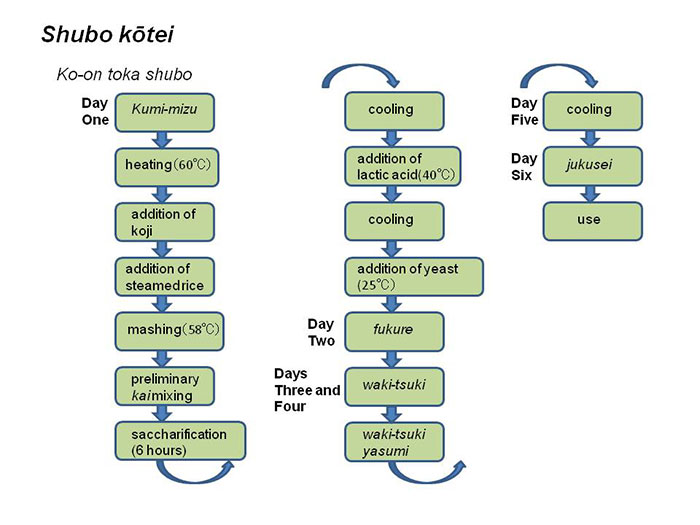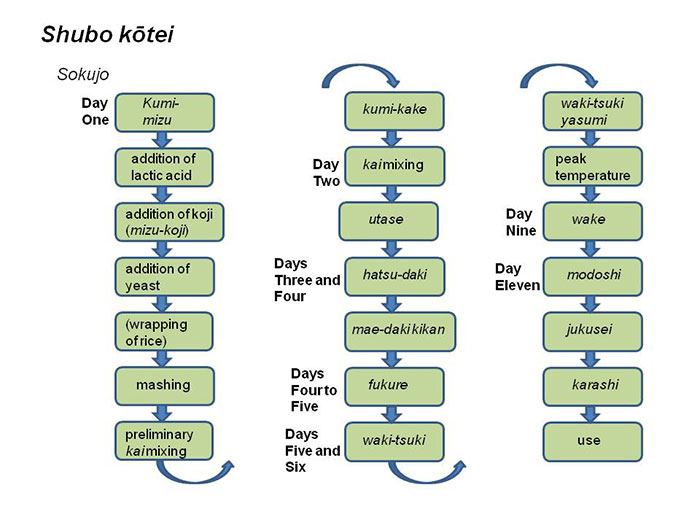Sokujō-kei shubo・sokujō shubo
- 【English】
- Yeast starter of the sokujō (“quick-fermenting”) school ; sokujō yeast starter
- 【Japanese】
- 速醸酒母・速醸系酒母
Sokujo is the “quick-fermenting” school of making yeast starter, invented in the late Meiji Period (around 1900) by Eda Kenjiro (江田鎌治郎, long “o”). It consists of standard sokujo, ko-on toka shubo (“high temperature saccharification shubo”) and variants.
These do not rely on the production of acid by lactic acid bacteria as for the kimoto school, but are based on the two principles of, first, shutting out unwanted micro-organisms and repressing their growth by the addition of lactic acid; and, second, maintaining a high level of yeast purity in the starter by adding large amounts of pure yeast cultures in the early stages. Compared to the kimoto school, it offers the following advantages.
- Yeast starter can be made safely with little influence from temperature fluctuations.
- Taking only a few short days to produce, it offers large economies of labour.
- Good quality sake yeast of known provenance and handling characteristics can be propagated at high levels of purity.
- It is relatively easy to make shubo of consistent quality.
The mashing (shikomi) temperature for sokujo is generally between 18 and 20°C. Mizu-koji is carried out for around three hours with mashing water (shikomi-sui) into which lactic acid has been added, then steamed rice is added after the addition of yeast, completing mashing. The rice is soft, so kai-ire is omitted after mashing. From about eight-to-ten hours after mashing, kumi-kake is commonly carried out for about twelve hours. A cylinder is put into the mash, and the rice inside it scooped out, leaving an empty space. The liquid which seeps into the cylinder is ladled out and poured onto the mash outside the cylinder. Repeated, this has the effect of lowering and evening out the temperature, and promoting saccharification. The temperature of the mash after kumi-kake is around 10°C. The next utase (打瀬) phase sees the mash at low temperatures until the temperature begins to be raised with containers of hot water (daki , 暖気), on day three or four. The standard procedure sees this followed by fukure (swelling) (around days four and five), and waki-tsuki (commencement of full fermentation) on about days five and six, with maturity reached on about day eleven or twelve.
Adding large quantities of yeast to the mash at the earliest possible moment is the key to increasing yeast purity, and the amount of yeast added, and the degree to which the temperature is lowered after kumi-kake are defining factors for the speed with which the following procedures progress.



